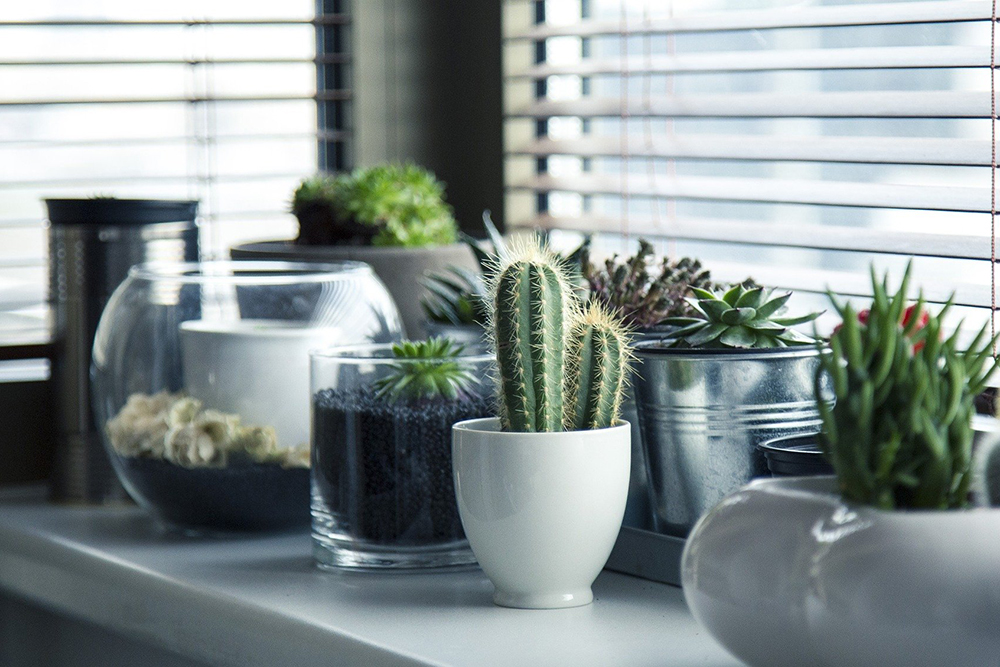How to Arrange Indoor Plants so They Thrive

You’ve might have bought some beautiful plants from your favourite shop or you have been given a collection of plants from a kind friend but now you’re not sure where to put them. Follow my guide to choose the best spots for your house plants where not only will they look amazing they will continue to grow and thrive.
STEP 1 – DO YOUR RESEARCH
What type of plant to you have? When you purchase a plant from the shop make sure to look at the label or at least the name of your plants, each plant is different and will respond to the areas of your home in different ways. Often the label on the plant has extra information such as light requirements, watering and growing tips, I often take these out of the pot as they can look unsightly but clean them and keep them in a plastic tub if I need to refer to it from time to time. If you are worried that you might forget the name you can take a photograph and add a caption to the photo in your phone or computer.
STEP 2 – ASSESS YOUR SPACE
Think about where you would like to put your plants, perhaps have a thought in mind of a collection of complimentary plants that you would like to put together or empty spaces where you would love to add a bit of colour and texture. Don’t be afraid to buy a large plant to fill a corner even if you don’t have a huge amount of space, sometimes a feature or focal plant can actually make your space look bigger.
STEP 3 – WORK OUT YOUR LOCATION
The sun rises in the east and sets in the west so the easiest way to work out how much sunshine you may get in your home is to use a compass (all iphones have one built into their system), stand by your windows around the house and work out which way your windows are facing. Where we live our windows on the rear of the house get the most sunshine so we have arranged our light loving plants in the rear of the house and the low light plants towards the front of the house.
To be really detailed you can create a table to monitor the light throughout the whole of your house during the day – obviously this will change depending on the time of year but you can also create one for each season if you wish.
You can also download a light app to your phone or invest in a light meter such as a Digital Lux Light Meter and move around your rooms at different times of the day to work out how much light is filtering into the room, make a note of each reading and consider how this will also change during the seasons.
STEP 4 – CLASSIFY YOUR LIGHT SOURCES
Depending on whether you are using a light meter or the app on your phone now classify these areas as ‘Direct Light’, ‘Filtered / Shade Light’ or ‘Low Light’. A quick and easy way to judge is based on shadows, if you put your hand up to make a shadow and your can see a perfect outline, this would be classed as ‘Direct Light’, as the shadow becomes more fuzzy on the edges, this would be ‘Filtered Light’ and if you can just make out the shape this would be ‘Low Light’.
STEP 5 – MATCH YOUR PLANTS TO THE LIGHT
Now you know your light sources, go back to the labels on your plants and / or your research notes and begin to arrange your plants how they prefer to be lit. You may wish to use steps, pot stands, hanging baskets or macrame holders to hang the plant on the wall. There is often very valuable light sources on the wall or high up towards the ceiling, especially if you have tall windows. You can utilise shelves, bookcases, desks – anything you wish. Perhaps visit some antique and vintage stores to find interesting artefacts and pots to put your plants in. Some vintage steps or ladders can look amazing when stacked with plants from top to bottom, especially trailing down from the top.
STEP 6 – PLAN FOR THE SEASONS
We have many windows in our house and a small conservatory, in the winter the conservatory is freezing and many plants would die if we left them out there. In the summer it’s a completely different situation, the light is so bright and the temperature can become practically tropical, so we make sure to move out the cold loving plants and move in the heat loving plants. We have saved a very poorly Bird of Paradise (Strelitzia Reginae) plant from a garden centre that had this plant outside in January on their special offers table, it was nicknamed the ‘dead plant’ in our household for months but I persevered and put it in a new pot (the original pot was so root bound I had to cut it out of the pot). With the warmer spring weather and a heat mat I put it out in the conservatory and while it did look completely dead and I’d nearly given up all hope, out popped a tiny leaf and now it has two leaves, it may still not look pretty but it just goes to show that if you give a plant the right environment it will thrive.
Central heating can be good in the winter months if you have a lot of heat loving house plants but be aware this can also dry them out. You may wish to invest in a humidifier which will help to create an ambient temperature for your room and will provide the extra moisture your plants will need to thrive.
STEP 7 – DON’T BE AFRAID TO MOVE YOUR PLANTS
You may have spent hours creating a beautiful display of your plants, worthy of many photographs and social media shares, but after a while you may notice that some of your plants aren’t doing as well as you would have hoped. We had a very sad Pilea Peperomioides aka Chinese Money Plant that just wasn’t happy at all even though it had the right light, water and soil, the leaves were starting to wilt so we moved it to a shaded window area and it now has lots of tiny plants all over the soil!
It’s also good to rotate your plants frequently so that the don’t tilt too much towards the light, with some plants you can actually seen them straining to find the light and in the case of the Monstera Deliciosa (Swiss Cheese Plant) if it doesn’t get enough light it will lose the fenestrations (splits) in the leaves.
Think about how the plants would live in their natural environment, would they be on the ground or high up, try to recreate this within your home.
STEP 8 – ENJOY!
Most of all have fun with your plants, you can over baby them and they can suffer as a result, in face sometimes it’s good just to leave your plant alone to settle into their new surroundings, keep them clean, watered and then just sit back and watch them grow.
Take the time to sit near them and just observe the small things, maybe a leaf popping out or a little flower appearing when you least expect it. Plants are so good for your well being, surround yourself in greenery, maybe put a very leafy plant near a window that’s open and just listen to the leaves rustling in the wind and just breathe in the fresh air with your eyes closed, take a moment to just be.
Collaborative, Affiliate and Sponsored Posts Disclosure
From time to time and where appropriate we may feature brands, books or products that we genuinely use, would use or have bought ourselves. We strive to choose items or services that we have used and are therefore happy to recommend to our readers. Any companies we choose to work with are carefully selected and will be promoted only if they are in alignment with our brand. If we have received any products for reviews, to be part of a giveaway or a sponsored post this will be mentioned within the post.
We are part of the Amazon associate scheme and if you choose to purchase an item promoted on this website through Amazon, we will receive a small commission which helps us to keep this website running and full of free content.



